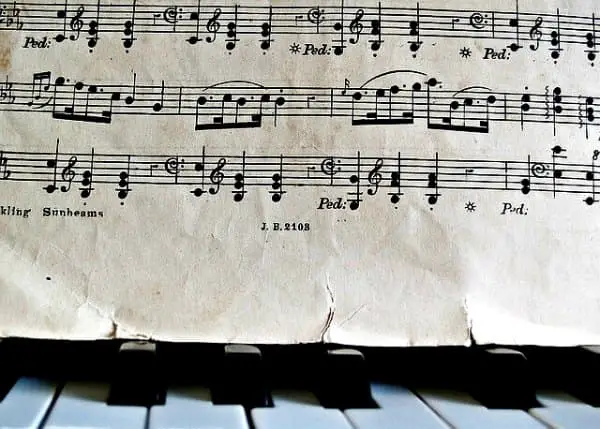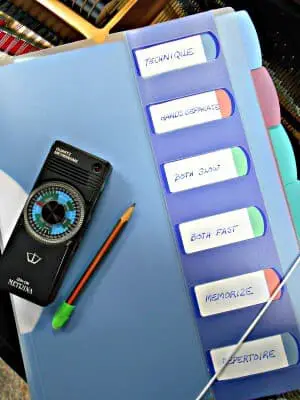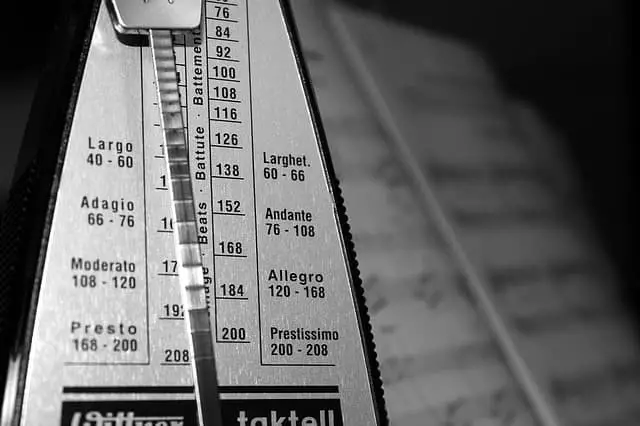- Home
- Piano Practice
- Piano Practice Chart
Piano Practice Chart for Adults
This article may contain compensated links. Please read the disclosure for more info.
Are you ready to take your piano playing to the next level? Well, you've come to the right place! I've got a free lesson for you with a handy piano practice chart that's perfect for adults, from beginners to intermediate players. And even advanced players may find it helpful. With this chart, you'll learn proven techniques for improving your piano practice routine and mastering a new piece in no time!
So let's get started!
Boost Your Piano Skills: Use a Piano Practice Chart
Want to enhance your piano playing skills and see results fast? My Piano Practice Chart is just what you need! Download the chart and use my easy-to-follow lessons to guide your journey. You'll see better results- sooner!
Make sure to follow the step-by-step plan outlined in the lesson below, and later adjust for your personal preferences. So, go ahead and start using it today! You'll be surprised at how quickly you'll see improvements.

How to Use the Piano Practice Chart
Preparatory Tasks
- Listen to a video or recording of your selected piece at least 2 times with the score in front of you.
- Highlight or mark any places in the score you notice more than others. Where it's extra fascinating, beautiful, or seems complicated, for example.
- Divide the piece into the large parts that make the "form" of the composition, like A B A, for example.
- Divide each large part into medium parts in phrases of 4-8 measures.
- Divide each medium part into small parts of 2-4 measures each.
Start Practicing in Parts
Start With The Small Parts:
- Play each small part very slowly, each hand separately, until the notes, fingering, rhythm (slow), dynamics, and articulation is smooth and correct.
- Then repeat the small part 4 times in a row correctly.
- After repeating this process with all the small parts of the whole piece (or 1 large part if working with a long piece), practice each in the same way, each small part - but this time with both hands together. This time you must play even slower, about half tempo if possible. After playing absolutely correctly, repeat each part very slowly 4 times.
- Next, repeat the same procedure with the medium parts; hands separately 4 repeats, and hands together 4 repeats. This time practice with a metronome, but still at a very slow tempo.
- Finally, do the same as above with the larger parts. This time you'll increase the metronome count with one step for each correct playing.
Working with the Whole Piece
- Practice each hand separately the whole piece at a medium tempo.
- Focus on the basics, like correct notes, fingering, rhythm, and dynamics. But also on phrasing and expression.
- Once you can play correctly and without trouble at a comfortable tempo, repeat 4 times in a row accurately.
- Do not allow mistakes!
- Next, repeat the process in half tempo (extremely slow) with both hands, all the piece.
Polish the Parts
- Play only the melody or melodies in the whole piece. Sometimes you'll find the melody in only one hand; sometimes, the melody moves from one hand to the other.
- Pick only one melody line each and work until perfect. Use correct fingers, even though it might be awkward if you omit other parts.
- In the same manner, play only the bass line until perfect.
- Practice the full accompaniment without melody.
- Play the bass line and the melody only. Adjust dynamics and expression.
- Combine all parts and practice slowly.
Increase speed
After learning the piece securely in a slow tempo, it's time to gradually speed it up to full tempo.
Sometimes this is easy, but sometimes this may take some time.
Go back to the first tasks and do them again, but this time with a metronome. For each correct repeat, increase the speed.
If possible, learn to play the piece slightly above the full tempo. This gives you a "margin" and makes the music feel much more comfortable when performing.
Memorization
Don't worry about the fact that some pianists seem to have a natural ability to memorize music. Instead, focus on making progress and getting better! Remember, memorization is a skill that can be developed with practice and patience. Keep pushing yourself and you'll see improvement over time.
Go back to the first tasks. This time, for each of the (4) repeats:
- Look only at the notes,
- Look only at your hand/s with the music in front of you.
- Look only at your hands without the music in front of you.
- Same as 3.
Do the same with each of the parts, as outlined above.
Free Piano Practice Chart PDF for Adults
I hope you're enjoying your piano studies. I am sharing with you a helpful resource that you can use to track your progress as you learn a new piece. I've created a free piano practice chart for you, which you can access as a PDF document. Just click on the link, which will open a new window.
Once it's open, you can easily print it out and have it readily available for reference as you continue practicing and improving your piano skills. Have fun! This chart will be an excellent way to stay organized and motivated in your piano journey.
Free piano practice chart (PDF)
Organizing Piano Practice for Better Repertoire Maintenance and Fun
Maintenance
Keeping your favorite pieces in your repertoire is a joy and a challenge. To make sure they stay fresh in your memory, make sure to play them regularly.
- Start by playing the piece every day for the first week after you learn it.
- In the second week, play it every 2-3 days.
- And from then on, aim to play it at least twice a week to keep it in your repertoire.
Organization Tips
 Piano Practice Organization
Piano Practice OrganizationOrganizing your music pieces is a great way to keep track of your progress and make practicing a breeze. That's why I use a simple but effective folder system with dividers for each level of readiness.
Every time I make significant improvements on a piece, I get to move it to the next level divider in my folder. It's a small step, but it's so satisfying to see my hard work paying off.
To keep my own piano practice interesting and enjoyable, I make sure to have a good mix of pieces at each level. That means having at least one piece of music, one repertoire piece, and one etude for each level.
So let's get those fingers moving and make some beautiful music! Happy playing!
Piano Practice Tools





